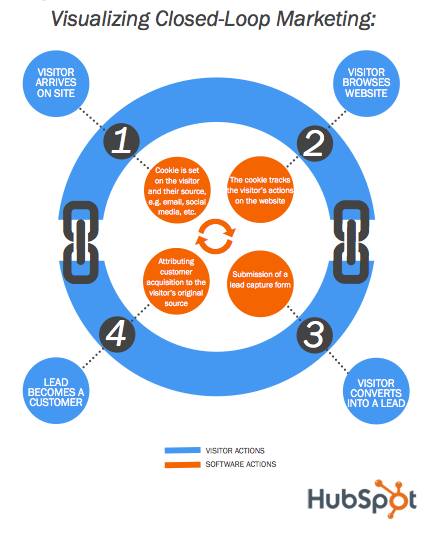Sales and marketing need to have a close relationship if you want to increase the number of qualified leads and conversions.
In fact, companies with 'dynamic, adaptable sales and marketing processes' had an average of 10 percent more of their sales people on quota.
Sales and marketing have a symbiotic relationship, nurtured by integrated technologies and, of course, effective sales and marketing meetings. In fact, together, sales and marketing can be the unstoppable dream team.
You need to get these guys in the same room, regularly and get them talking about the same goals, in the same language. Here's how.
1. Make marketing and sales meetings regular
There needs to be a regular time - weekly or monthly - where everyone sits down together. Not just the head of each department - everyone. To have effective sales and marketing meetings, they don't have to be long or complex but they do have to be mandatory. And by making them a staple event, you don't get arbitrary meetings called by one team just to vent at the other.
Yes, I know we've said that meetings are often a waste of time and money. But not always. When you have two parties that have for so long been at odds, the only way to nurture more coöperation is face-to-face time together.
When we short-change the face-to-face, we short-change the relationship. It’s easy to replace a vendor you’ve never met, but people think twice before firing a colleague or friend that they respect on a personal level. - Thom Singer.
Body language, tone, facial expressions: these all matter when you are trying to build and strengthen a traditionally rocky relationship.
Consider building in a few minutes for friendly networking between sales and marketing as well, to encourage a more relaxed and open dialogue.
2. Set an agenda in advance
Who hasn't been sat in a meeting and faced that dreaded line, 'What do you think?'...
To get the most out of every meeting, every time, set an agenda in advance and send it out so everyone knows what to expect and what to prepare.
Some topics you will want to discuss in every meeting. Others might be seasonal or one-offs, like particular promotions or news events.
You could try using a joint project management tool, such as Basecamp to create discussions and set deadlines for an agenda collaboratively. HubSpot also suggests allocating discussion points to a specific person to lead and setting a time limit for each topic.
3. Rock, paper, scissors, lizard, Spock... data
Don't worry. You don't have to have an eidetic memory like Sheldon Cooper to come out trumps here. Data trumps everything.
The point is that rather than arguing from gut instinct and handing the argument to the highest-paid person in the room, effective sales and marketing meetings need to be based on real numbers. How many leads are marketing handing over? How many of those are converting? And at what value?
And it works both ways: how many leads are sales following up with? How many up or cross-sell opportunities have they pursued with existing delighted customers?
Everyone's goal is usually a target revenue figure. That target revenue can be easily calculated back into required monthly site visitors, conversions and values. HubSpot have even created a spreadsheet so all you have to do is put the numbers in and it does the maths.
By knowing who has what goals, when it comes to your meeting you already know who is performing and how. So instead of attributing blame round in a circle for one missed figure, you can concentrate on figuring out how to better meet everyone's individual goals.
4. Don't waste time with the obvious
If you are using a closed-loop marketing system, like HubSpot, then both teams have access to the same data. This leaves you free to focus on trends, anomalies and opportunities.

Both sales and marketing should have access to any inbound marketing analytics and CRM systems, and if a topic is on the agenda everyone should go in and dig into the data themselves. Everyone will learn a lot more about the customer journey that way.
5. Development is just as important as data
It's not just converted customers, inbound leads and revenue per customer that need to be discussed in effective sales and marketing meetings. Often people think it's all about looping marketing in to the sales process, but it has to go both ways.
71 percent of sales reps receive materials from marketing - but of that group 42 percent say marketing 'rarely' or 'never' makes them part of the development process. - Brainshark State of the Sales Rep Report.
Marketing wants to create content that resonates with buyers. Who knows buyers best? The people on the front line in sales. So ask them. After your customers, the sales team are the next best resource for helping marketing to create remarkable and relevant content.
Plus, sales teams will often be using that content in their sales process, or an adapted version of it. They need to be part of its creation. If not you'll get sales altering the collateral, leaving customers with a fractured view of your brand.
6. Focus on the essentials
Finally, remember, meetings are more effective when they address the important stuff. Don't use meetings to solve minor problems. Do that in person one-to-one. Everyone in sales and marketing should be comfortable approaching one another at any time to collaborate and learn.
The idea is that rather than every problem bubbling up to the VP of Sales and then having a conversation with the VP Marketing and then it flows downhill. Solve the problems at their source by empowering everyone on the team and building relationships at all levels in the team. - Mark Volpe, CMO at HubSpot.
It's imperative that marketing activities enable sales activities. Otherwise, what's the point? The metrics of success rely on bringing good MQLs and SQLs into the business. Sure, traffic can play a role to build your brand, but your business won't ever grow unless you align your sales and marketing with the goal of customer-acquisition. Now, that doesn't mean sell, sell, sell. It just means creating clarity around the customer pipeline and incentivising certain KPIs over others, such a lead quality rather than quantity.
And if all else fails? Get down the pub. Everything flows better after a pint.
[This content was updated in January 2021]




